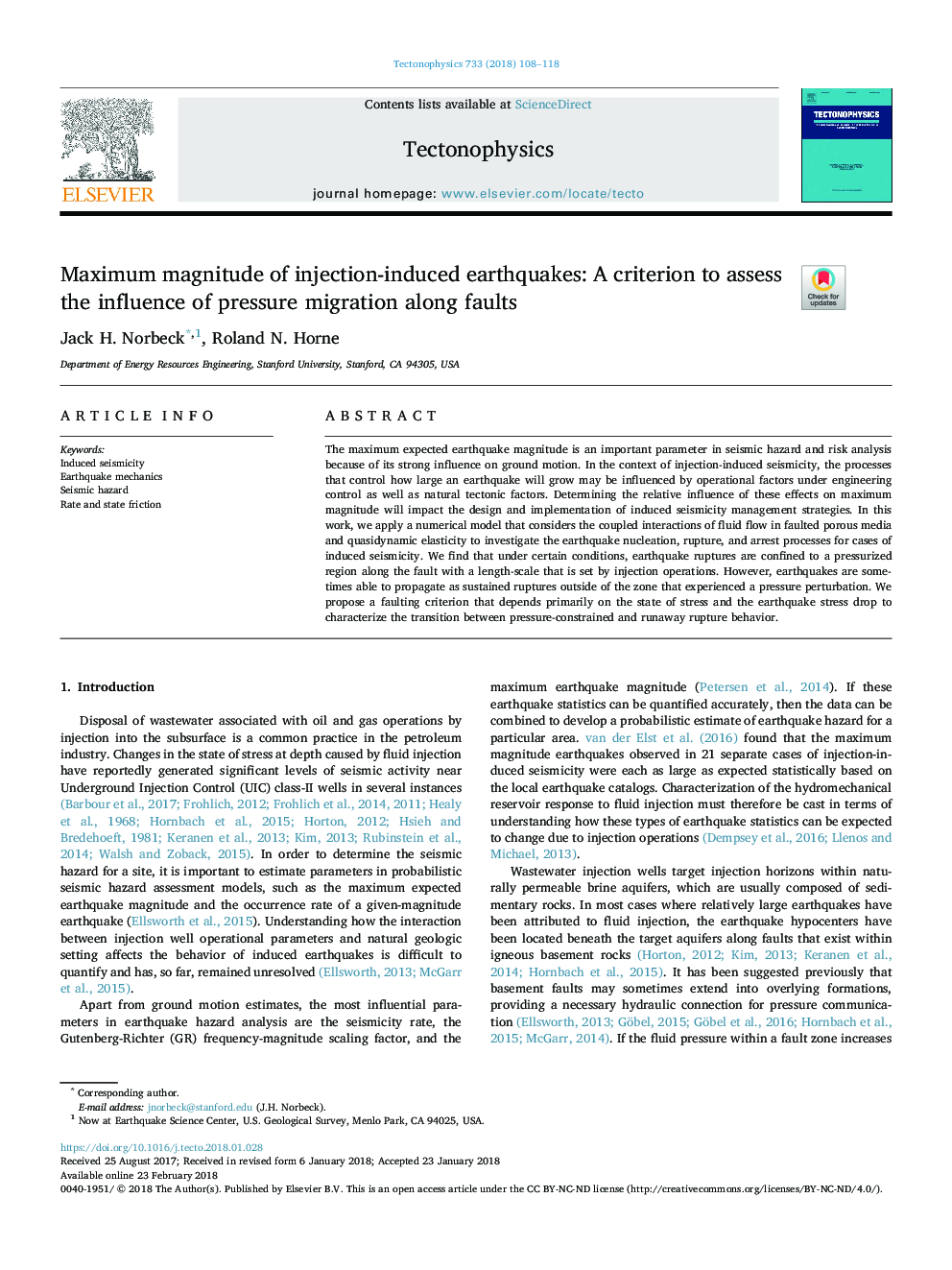| Article ID | Journal | Published Year | Pages | File Type |
|---|---|---|---|---|
| 8908692 | Tectonophysics | 2018 | 11 Pages |
Abstract
The maximum expected earthquake magnitude is an important parameter in seismic hazard and risk analysis because of its strong influence on ground motion. In the context of injection-induced seismicity, the processes that control how large an earthquake will grow may be influenced by operational factors under engineering control as well as natural tectonic factors. Determining the relative influence of these effects on maximum magnitude will impact the design and implementation of induced seismicity management strategies. In this work, we apply a numerical model that considers the coupled interactions of fluid flow in faulted porous media and quasidynamic elasticity to investigate the earthquake nucleation, rupture, and arrest processes for cases of induced seismicity. We find that under certain conditions, earthquake ruptures are confined to a pressurized region along the fault with a length-scale that is set by injection operations. However, earthquakes are sometimes able to propagate as sustained ruptures outside of the zone that experienced a pressure perturbation. We propose a faulting criterion that depends primarily on the state of stress and the earthquake stress drop to characterize the transition between pressure-constrained and runaway rupture behavior.
Related Topics
Physical Sciences and Engineering
Earth and Planetary Sciences
Earth-Surface Processes
Authors
Jack H. Norbeck, Roland N. Horne,
